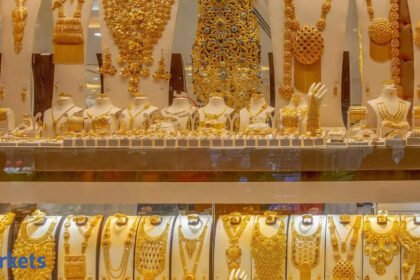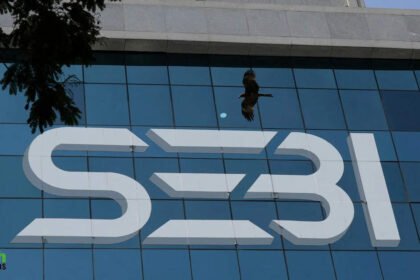Yet in the 1980s, America’s two biggest soft drink companies raced for another milestone: to serve the first fizzy drink in orbit.
One of the greatest excesses of the cola wars happened as NASA was transitioning from the prestige-driven Apollo program toward our modern era of commercial spaceflight, which has been dominated by companies willing to land a Nokia 4G/LTE communications system on the moon, or launch a mannequin-driven Tesla Roadster into space. To the Coca-Cola Co. and PepsiCo, the commercially minded shuttle program was a perfect marketing opportunity.
Forty years on, a NASA astronaut remembers positive moments of the soft drink space race. “We did our job and it was kind of fun,” said Loren Acton, a space shuttle payload specialist.
But others who faced the cola giants’ rivalry were less charitable.
“Of all the things that were done on the shuttle, the one that caused the most aggravation was the goddamn cola war,” said James M. Beggs, the NASA administrator in the early 1980s. Beggs died in 2020, but was quoted in a 1986 interview by Joseph Trento, a reporter, in Trento’s book “Prescription for Disaster: From the Glory of Apollo to the Betrayal of the Shuttle.” NASA in the 1980s was on the cutting edge of technology, and was working with major private companies to launch their satellites and conduct space-based research using the space shuttle fleet. But when it came to what it fed its astronauts in orbit, the agency had work to do. Food on the shuttle had progressed past the cubes and tubes of early spaceflight, but NASA still relied on freeze-dried and thermostabilized foods to feed astronauts.
“NASA was trying to make the food situation on the shuttle a little bit more what they would have called normal,” said Tony England, a NASA astronaut who served as a mission specialist.
Beverages were a particular concern. NASA wanted astronauts to drink more fluids while in space and the shuttle’s lack of refrigeration made drinks less appealing.
That made the agency receptive when Coca-Cola proposed testing zero-gravity carbonated beverages as a possible way to improve drinks on the shuttle, decades before astronauts could have espresso in orbit, or drink it out of a special aroma-preserving cup.
The soft drink giant had its own motives.
In 1984, Coca-Cola was riding high on the rollout of Diet Coke. But it was morning again in America, and the Atlanta-based company was rebuilding the influence it had lost with the White House when Ronald Reagan sent Jimmy Carter home to Georgia. The cola test with NASA was one of the company’s Reagan-era charm offensives.
The company declined to comment about the episode.
In June 1984, Brian Dyson, the Coca-Cola North America president, said in a speech that the company was negotiating with NASA to install vending machines on “future space stations and shuttles,” according to United Press International.
The company’s proposal to NASA was a research project that fell outside federal bidding rules. But Dyson’s remarks had left the impression of a commercial relationship with NASA. That quickly got the attention of PepsiCo (which declined to comment for this article).
Max Friedersdorf, PepsiCo’s vice president for public affairs and a former aide to Reagan, pointed this out in a letter to Beggs, the NASA administrator, in which he insisted that his company be given a chance to compete with Coca-Cola to supply carbonated refreshment to orbiting astronauts.
A month later, NASA wrote to both companies that the project had been terminated.
But NASA remained interested in building a drink container, and a few months after the Pepsi uproar had subsided, officials reached out to Coca-Cola to rekindle the project. However, the agency had a long list of technical requirements that the Coke container for the test needed to meet in order to fly on the shuttle.
Consuming soda in space presents numerous technical challenges. Astronauts usually drink water or rehydrated powdered drinks from soft plastic pouches, which aren’t suitable for containing carbonation. Soda needs a rigid container, with a dispensing valve that lets astronauts drink without releasing a sticky spray that can be dangerous inside a delicate spacecraft.
“They’re sending the sugar syrup as it is,” Xulei Wu, a food scientist at NASA’s Johnson Space Center in Houston, said in a recent interview of the impracticality of drinking soda in microgravity. “It’s not a powder you add water to dissolve, so it’s in the liquid form.”
The development process was elaborate and costly. The company said it devoted the equivalent of hundreds of days of staff work and spent $250,000 (in 1985 dollars) on the container. The Coke team expected that its soda would launch on an April 1985 shuttle flight.
Then, weeks before it was to blast off, Johnson Space Center grounded the cola test from the shuttle flight. NASA lawyers in Washington told Coca-Cola that the officials in Houston had not followed the correct procedures for flying the containers or notifying the company’s competitors.
But Coca-Cola kept working behind the scenes to book its container on a July 1985 spaceflight and, more important, exclude PepsiCo from the flight. Then Coca-Cola committed another blunder when it publicly announced it would be flying on the shuttle, before NASA had agreed.
After Sen. Sam Nunn, D-Ga., intervened on Coca-Cola’s behalf, Beggs wrote in a letter to the senator that the agency had “a policy of avoiding, wherever possible, the use of the NASA reputation and name to endorse a product sold to the general public.”
That opened the door for PepsiCo. Four days after Coca-Cola completed its deal with NASA, PepsiCo signed an identical agreement. After all of that effort, PepsiCo’s containers would be sitting next to Coca-Cola’s on the same shuttle.
The July flight was designated STS-51F, and would use the shuttle Challenger to get to orbit. Its crew of seven had a mix of impressive credentials and experience. They were going to orbit to conduct serious experiments in solar physics, astronomy and atmospheric science. The busy schedule would have the crew members working alternating 12-hour shifts to maximize what they could achieve in orbit.
And sandwiched between all that science, they would test the first cola in space.
“We didn’t want to be in a position where we could say we like the Coke better than the Pepsi or the Pepsi better than the Coke,” England said of the astronauts.
To avoid the question of preference, they split the test between two teams. One would test the Coke container and the other would test the Pepsi container. No one would test both.
When it came time to launch, PepsiCo officials were celebratory, handing out T-shirts to NASA staff members with their project’s slogan: “One giant sip for mankind.”
After a scrubbed launch attempt, the flight got off the ground on July 29, 1985. Things did not go as planned.
Five minutes after liftoff, Challenger’s center engine automatically cut off. The temperature sensors meant to protect the engine from catastrophically overheating had failed. The least risky option to keep the crew safe was a maneuver known as “abort to orbit,” which would put the flight at a lower altitude than planned.
The already busy mission became more of a scramble. Timings and positions had to be recalculated for the lower orbit. Messages flew between mission control and the shuttle.
For all the hurried adjusting, the cola test never dropped off the schedule.
“They wanted to get it over with, not carry that one on another mission,” England said of NASA.
A number of hours into the flight, orbiting more than 100 miles above Earth, the astronauts, some sick from weightlessness, drank the first soda in space.
To recognize Coca-Cola’s initiative in starting the project, the astronauts tested the company’s container first, pushing a button to spray the soda in their mouths. It was warm and sometimes frothy, but recognizably Coke, ending with a slight metallic taste from the dispensing mechanism. Hours later, astronauts on the other shift tested the Pepsi cans.
Coke’s honor as the first cola in space was a Pyrrhic victory, one that NASA instructed the crew not to discuss with the ground while they were in space.
Once the shuttle landed, the cola companies sniped at each other.
“We consider ourselves the leader in the industry,” a Coca-Cola spokesperson crowed.
A PepsiCo spokesperson retorted that if the astronauts had tasted Coke first, “you can be sure they had to wash it down with a Pepsi.”
But the shuttle’s harrowing launch dominated the news, overshadowing the companies’ swipes.
For all the political combat leading up to the flight, the cola test was largely ignored by those involved. A NASA webpage on the mission refers ambiguously to “technology research.” Coca-Cola mentions its plaudit as being the first cola in space, and its subsequent orbital soft drink research in the 1990s, only sparingly. PepsiCo refers to the event briefly in a historical timeline.
And in the 40 years since the soft drink space race, carbonated beverages have never found a regular place on the NASA menu.
This article originally appeared in The New York Times.







